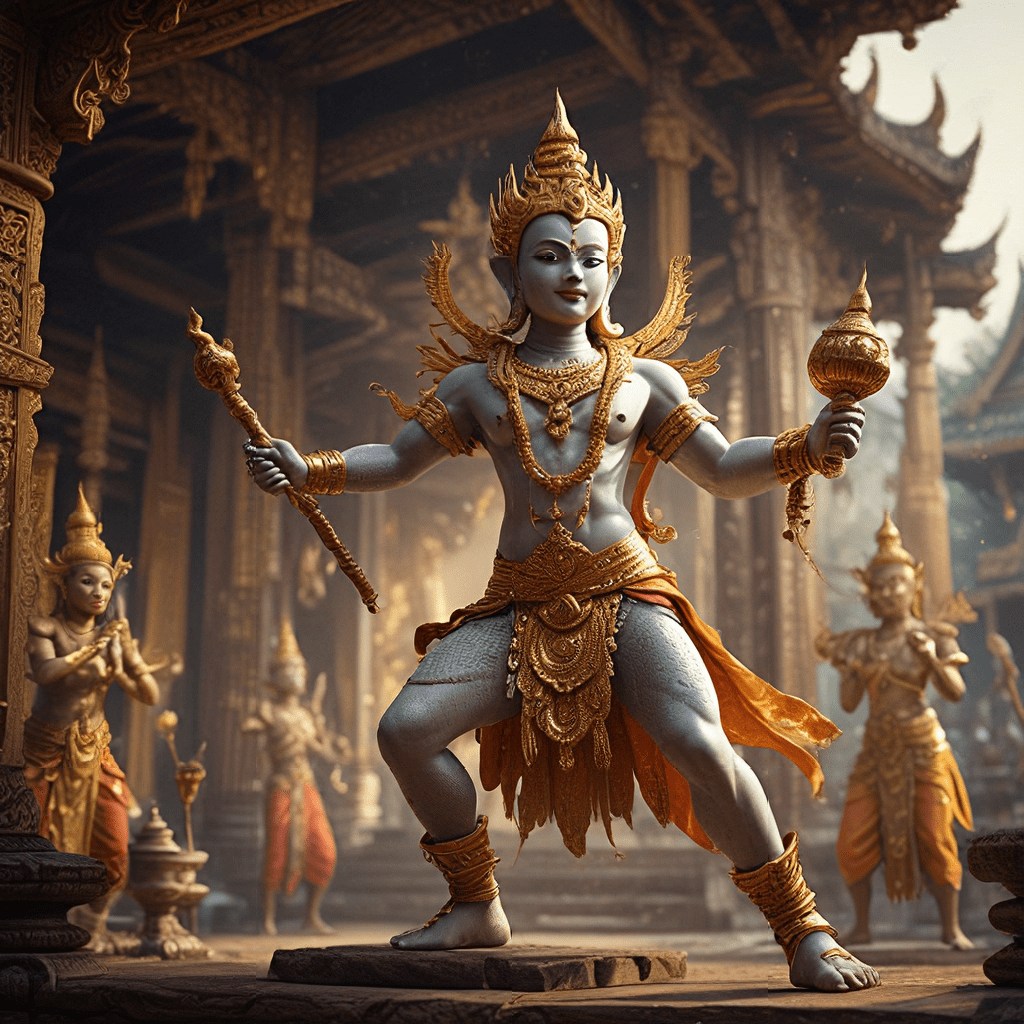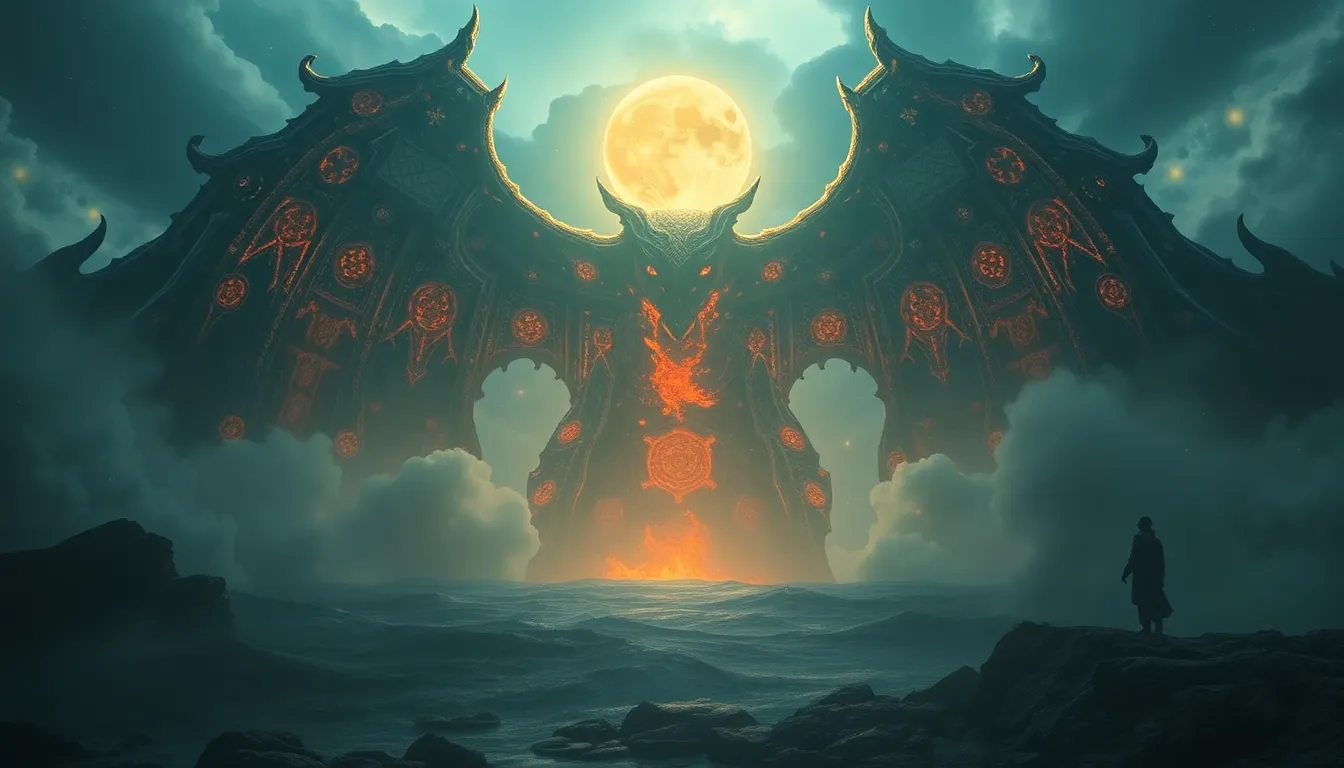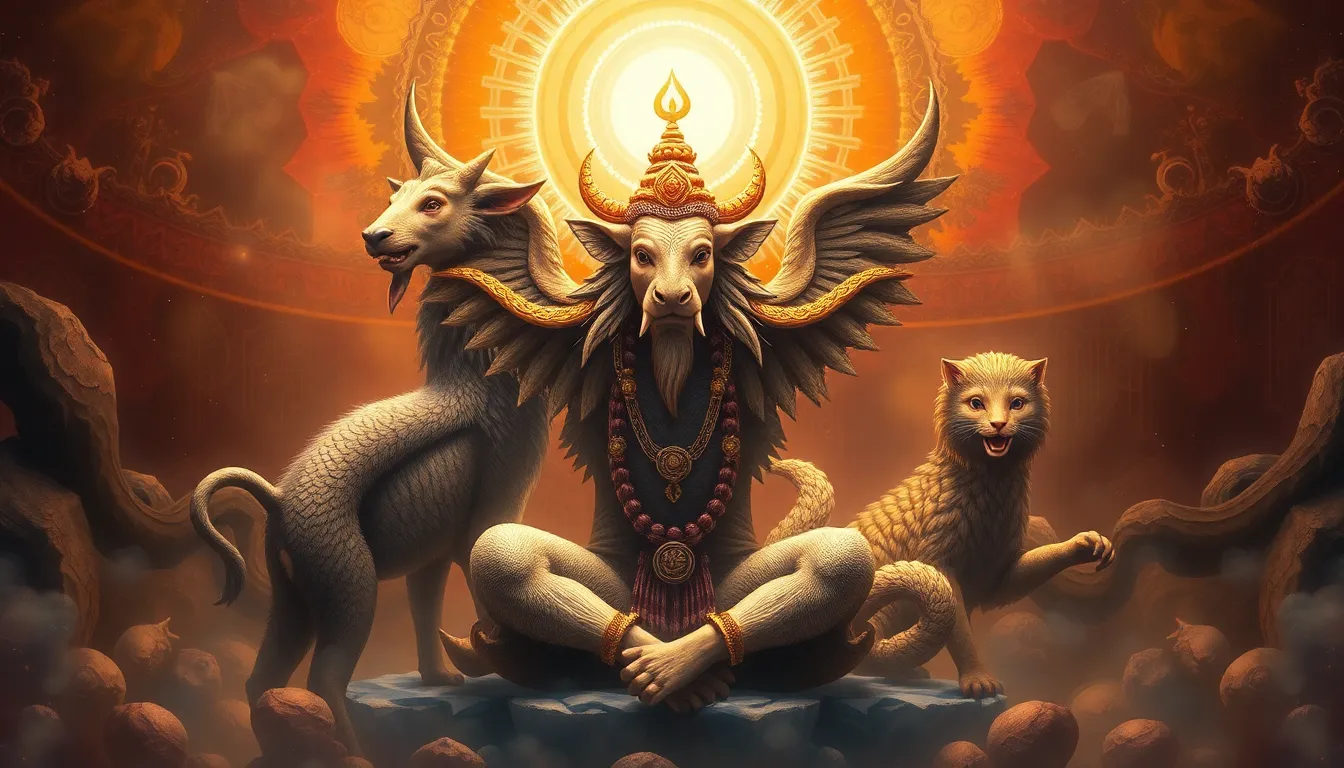Thai Mythology: A Rich Tapestry of Beliefs
Thailand, a land of vibrant culture and ancient traditions, is home to a fascinating and intricate mythology, a tapestry woven from beliefs, folklore, and superstition. This rich tapestry reflects the country's history, its connection to nature, and its spiritual values. Thai mythology is more than just stories; it's a living tradition that shapes daily life, influencing everything from social interactions to the way people view the world.
From the origins of the universe to the stories of gods and mythical creatures, Thai mythology offers a glimpse into the soul of Thailand. It's a complex system of beliefs that speaks to the human desire to understand the unknown, to find meaning in the world, and to connect with something larger than themselves.
From Creation Myths to Cosmic Battles
At the heart of Thai mythology lie creation myths that explain the origins of the universe, the earth, and humanity. These myths, often featuring powerful deities, reflect a deep respect for the natural world and a belief in a cosmic order. The most well-known creation myth centers around Phra Phrom, the creator god, who emerged from a cosmic egg, bringing forth the universe and all its inhabitants.
Another prevalent theme in Thai mythology is the epic battle between good and evil, often personified by powerful deities and mythical creatures. The classic story of Ramakien, the Thai version of the Indian epic Ramayana, exemplifies this theme. This epic tale tells the story of Rama, the righteous prince, who battles the evil demon king Ravana to rescue his beloved wife Sita. These stories remind us of the enduring struggle between light and darkness, and the importance of righteousness and virtue.
The Importance of the Spirits: Phi and Deva
The belief in spirits, both benevolent and malevolent, is deeply ingrained in Thai culture. These spirits, known as "phi," are believed to inhabit the natural world, from trees and mountains to homes and temples. Some "phi" are considered guardians, offering protection and good fortune, while others are mischievous or even dangerous.
Alongside the "phi" are the "deva," celestial beings who reside in the heavens. These beings are often associated with different aspects of nature and are seen as benevolent protectors. The belief in spirits and deities underscores the interconnectedness of the spiritual and physical worlds, emphasizing the need to respect and honor both.
Folklore of the Animals: From Wise Elephants to Mischievous Monkeys
The animal kingdom plays a prominent role in Thai mythology, with each animal embodying specific characteristics and virtues. The elephant, revered as the "king of the jungle," is a symbol of wisdom, strength, and good fortune. The monkey, often depicted as playful and mischievous, represents cleverness and resourcefulness.
From the cunning fox to the loyal dog, each animal has a place in the rich tapestry of Thai folklore. These animal tales offer insights into human nature, morality, and the delicate balance of the natural world.
Superstitions Shaping Daily Life
Superstitions are an integral part of Thai mythology, shaping everyday life and influencing people's decisions. For example, the belief in lucky and unlucky numbers, certain colors, and specific days of the week influences everything from choosing a house to making important decisions.
Other common superstitions include avoiding stepping on cracks in the pavement, avoiding certain birds, and avoiding certain actions on specific lunar days. These superstitions, while often considered irrational by outsiders, reflect a deep respect for tradition and a desire to maintain harmony with the unseen forces that govern the world.
Superstitions Shaping Daily Life
Superstitions are woven into the fabric of Thai life, shaping everything from daily routines to major decisions. These beliefs, passed down through generations, reflect a deep reverence for the unseen forces that are believed to govern the world.
One common superstition revolves around lucky and unlucky numbers. The number 9 is considered particularly auspicious, symbolizing prosperity and good fortune. This belief extends to birthdays, house numbers, and even car license plates. Conversely, the number 13 is often seen as unlucky, mirroring similar beliefs in other cultures.
Another popular superstition involves the color of clothing. Wearing white is often seen as a sign of mourning, while yellow is associated with Buddhism and good luck. Red is considered auspicious for weddings and other celebrations, while black is often associated with negativity. These color associations are deeply ingrained in Thai culture and influence people's choices in everyday life.
The days of the week also carry specific meanings and significance. Tuesday, for example, is considered an unlucky day for travel, while Friday is associated with romance and good fortune. These beliefs influence when people schedule important events, from weddings to business meetings.
The Role of Karma and Reincarnation
The ideas of karma and reincarnation are central to Thai beliefs, shaping people's understanding of life, death, and the spiritual realm. Karma, the law of cause and effect, dictates that actions have consequences, both in this life and in future lives. Reincarnation, the belief in the soul's rebirth into a new life, provides a framework for understanding suffering and the cyclical nature of existence.
The concept of karma encourages ethical behavior and promotes compassion, as people are aware that their actions will have consequences in future lives. Reincarnation offers hope for redemption and encourages people to strive for spiritual growth and enlightenment. These beliefs provide a moral compass and guide people towards a virtuous and fulfilling life.
The Influence of Buddhism and Hinduism
Thai mythology has been deeply influenced by Buddhism and Hinduism, two major religions that have shaped the country's cultural landscape. Buddhism, with its emphasis on compassion, mindfulness, and the pursuit of enlightenment, has left an indelible mark on Thai beliefs and practices. The concept of karma and reincarnation, central to Buddhist teachings, has woven its way into the very fabric of Thai mythology.
Hinduism, with its rich pantheon of gods and goddesses, has also contributed to the tapestry of Thai mythology. The Ramakien, the Thai version of the Indian epic Ramayana, draws heavily on Hindu mythology and underscores the importance of dharma (righteousness) and the eternal struggle between good and evil.
The influence of these religions has created a complex and multifaceted mythology that blends indigenous beliefs with imported traditions. This fusion of beliefs reflects the interconnectedness of different cultures and underscores the enduring power of these ancient faiths to shape the human experience.
Theories on the Origins of Thai Mythology
The origins of Thai mythology are shrouded in mystery, but scholars believe that it evolved over centuries, drawing on indigenous beliefs, animistic traditions, and the influence of neighboring cultures. Some scholars suggest that Thai mythology has roots in the ancient Austronesian cultures that migrated to Southeast Asia thousands of years ago. Others see evidence of Indian influence, reflecting the strong cultural and religious connections between Thailand and the Indian subcontinent.
The ancient Khmer civilization, which flourished in present-day Cambodia, also played a significant role in shaping Thai mythology. The Khmer Empire exerted a powerful influence over the region for centuries, leaving behind a legacy of architecture, art, and spiritual beliefs. The Khmer concept of devas, celestial beings, is reflected in Thai mythology, as is the belief in spirits inhabiting the natural world.
Exploring the Cultural Significance of Thai Folklore
Thai mythology is more than just a collection of stories; it's a living tradition that informs the everyday lives of Thai people. From the way they interact with nature to their understanding of good and evil, the beliefs and superstitions of Thai folklore shape their worldview and guide their actions.
Thai mythology plays a vital role in community building and social cohesion. Stories passed down through generations foster a sense of shared identity and history, reminding people of their cultural heritage and the values that bind them together. These stories also serve as a source of entertainment, providing a rich tapestry of myths and legends that are enjoyed by people of all ages.
The Enduring Power of Thai Myths and Legends
Thai mythology, with its blend of ancient beliefs, spiritual traditions, and cultural influences, continues to captivate and inspire people today. While some may dismiss these stories as mere folklore, they remain an integral part of Thai culture, shaping the way people think, feel, and interact with the world around them.
The enduring power of Thai myths and legends lies in their ability to speak to the human experience in a universal language. These stories explore themes of good and evil, love and loss, and the search for meaning in a complex and often unpredictable world. No matter how modern society becomes, the stories of Thai folklore will continue to resonate with those seeking to understand the mysteries of life and the enduring power of the human spirit.
FAQs
Q: What are some of the most popular Thai myths and legends?
A: Some of the most popular Thai myths and legends include the Ramakien (the Thai version of the Ramayana), the story of Phra Phrom (the creator god), the legend of the Naga (serpent-like mythical creatures), and the folktales about animals like the elephant, monkey, and fox.
Q: How does Thai mythology influence daily life?
A: Thai mythology influences many aspects of daily life, from the way people dress to the way they make decisions. Superstitions about lucky and unlucky numbers, days of the week, and colors are deeply ingrained in Thai culture and shape people's choices in everyday life.
Q: Is Thai mythology still relevant today?
A: Despite modernization and globalization, Thai mythology remains relevant today. The stories and beliefs continue to provide a framework for understanding the world and navigating life's challenges. They also serve as a reminder of Thailand's rich cultural legacy and the importance of preserving traditional values.




